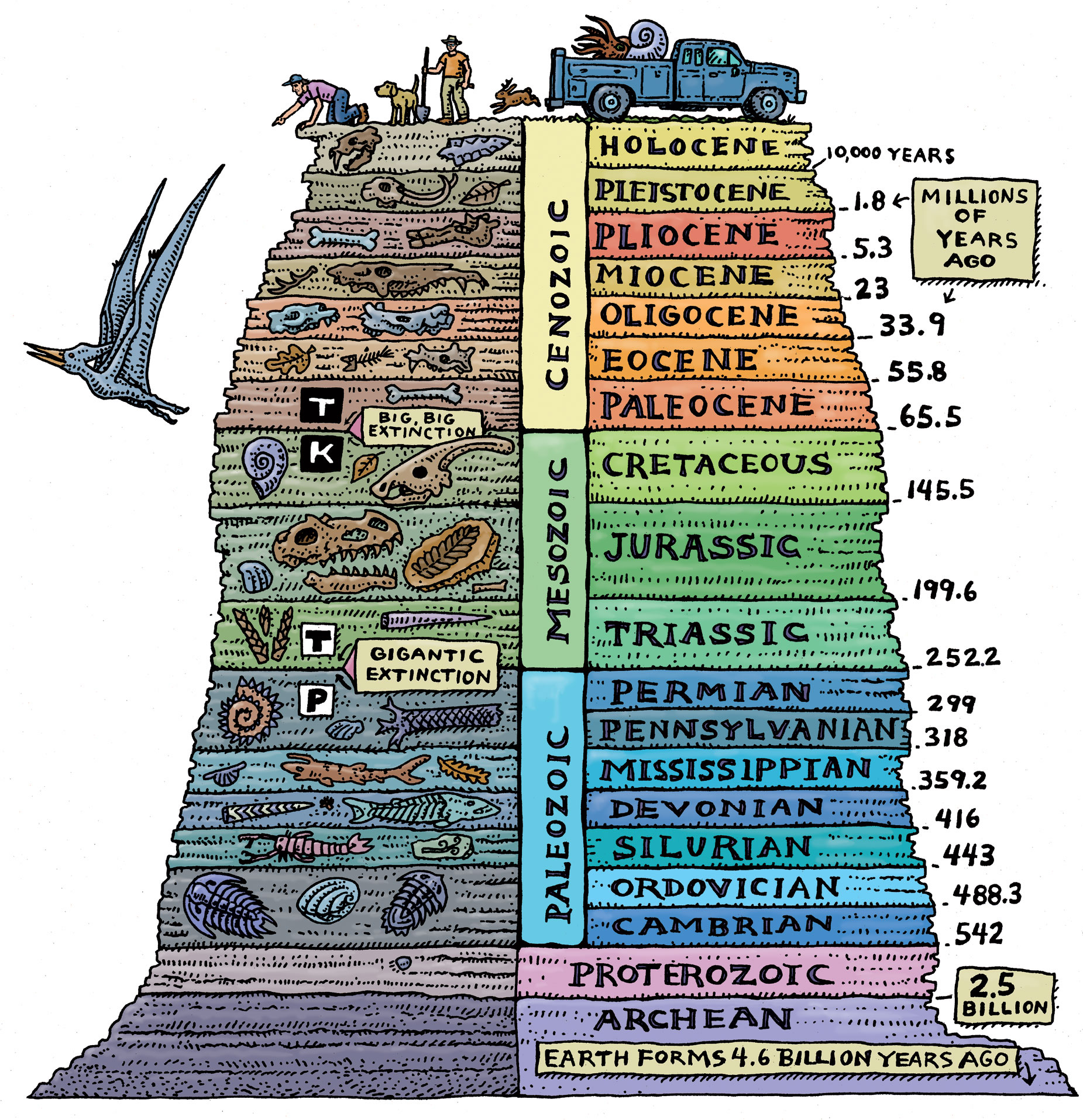See, this is why I provided that handy-dandy little index. You could have answered this yourself!
Claim CC200:
There are no transitional fossils. Evolution predicts a continuum between each fossil organism and its ancestors. Instead, we see systematic gaps in the fossil record.
Source:
Morris, Henry M. 1985.
Scientific Creationism. Green Forest, AR: Master Books, pp. 78-90.
Watchtower Bible and Tract Society. 1985.
Life--How Did It Get Here? Brooklyn, NY, pp. 57-59.
Response:
- There are many transitional fossils. The only way that the claim of their absence may be remotely justified, aside from ignoring the evidence completely, is to redefine "transitional" as referring to a fossil that is a direct ancestor of one organism and a direct descendant of another. However, direct lineages are not required; they could not be verified even if found. What a transitional fossil is, in keeping with what the theory of evolution predicts, is a fossil that shows a mosaic of features from an older and more recent organism.
- Transitional fossils may coexist with gaps. We do not expect to find finely detailed sequences of fossils lasting for millions of years. Nevertheless, we do find several fine gradations of fossils between species and genera, and we find many other sequences between higher taxa that are still very well filled out.
The following are fossil transitions between species and genera:
- Human ancestry. There are many fossils of human ancestors, and the differences between species are so gradual that it is not always clear where to draw the lines between them.
- The horns of titanotheres (extinct Cenozoic mammals) appear in progressively larger sizes, from nothing to prominence. Other head and neck features also evolved. These features are adaptations for head-on ramming analogous to sheep behavior (Stanley 1974).
- A gradual transitional fossil sequence connects the foraminifera Globigerinoides trilobus and Orbulina universa (Pearson et al. 1997). O. universa, the later fossil, features a spherical test surrounding a "Globigerinoides-like" shell, showing that a feature was added, not lost. The evidence is seen in all major tropical ocean basins. Several intermediate morphospecies connect the two species, as may be seen in the figure included in Lindsay (1997).
- The fossil record shows transitions between species of Phacops (a trilobite; Phacops rana is the Pennsylvania state fossil; Eldredge 1972; 1974; Strapple 1978).
- Planktonic forminifera (Malmgren et al. 1984). This is an example of punctuated gradualism. A ten-million-year foraminifera fossil record shows long periods of stasis and other periods of relatively rapid but still gradual morphologic change.
- Fossils of the diatom Rhizosolenia are very common (they are mined as diatomaceous earth), and they show a continuous record of almost two million years which includes a record of a speciation event (Miller 1999, 44-45).
- Lake Turkana mollusc species (Lewin 1981).
- Cenozoic marine ostracodes (Cronin 1985).
- The Eocene primate genus Cantius (Gingerich 1976, 1980, 1983).
- Scallops of the genus Chesapecten show gradual change in one "ear" of their hinge over about 13 million years. The ribs also change (Pojeta and Springer 2001; Ward and Blackwelder 1975).
- Gryphaea (coiled oysters) become larger and broader but thinner and flatter during the Early Jurassic (Hallam 1968).
The following are fossil transitionals between families, orders, and classes:
- Human ancestry. Australopithecus, though its leg and pelvis bones show it walked upright, had a bony ridge on the forearm, probably vestigial, indicative of knuckle walking (Richmond and Strait 2000).
- Dinosaur-bird transitions.
- Haasiophis terrasanctus is a primitive marine snake with well-developed hind limbs. Although other limbless snakes might be more ancestral, this fossil shows a relationship of snakes with limbed ancestors (Tchernov et al. 2000). Pachyrhachis is another snake with legs that is related to Haasiophis (Caldwell and Lee 1997).
- The jaws of mososaurs are also intermediate between snakes and lizards. Like the snake's stretchable jaws, they have highly flexible lower jaws, but unlike snakes, they do not have highly flexible upper jaws. Some other skull features of mososaurs are intermediate between snakes and primitive lizards (Caldwell and Lee 1997; Lee et al. 1999; Tchernov et al. 2000).
- Transitions between mesonychids and whales.
- Transitions between fish and tetrapods.
- Transitions from condylarths (a kind of land mammal) to fully aquatic modern manatees. In particular, Pezosiren portelli is clearly a sirenian, but its hind limbs and pelvis are unreduced (Domning 2001a, 2001b).
- Runcaria, a Middle Devonian plant, was a precursor to seed plants. It had all the qualities of seeds except a solid seed coat and a system to guide pollen to the seed (Gerrienne et al. 2004).
- A bee, Melittosphex burmensis, from Early Cretaceous amber, has primitive characteristics expected from a transition between crabronid wasps and extant bees (Poinar and Danforth 2006).
The following are fossil transitionals between kingdoms and phyla:
- The Cambrian fossils Halkiera and Wiwaxia have features that connect them with each other and with the modern phyla of Mollusca, Brachiopoda, and Annelida. In particular, one species of halkieriid has brachiopod-like shells on the dorsal side at each end. This is seen also in an immature stage of the living brachiopod speciesNeocrania. It has setae identical in structure to polychaetes, a group of annelids. Wiwaxia and Halkiera have the same basic arrangement of hollow sclerites, an arrangement that is similar to the chaetae arrangement of polychaetes. The undersurface of Wiwaxia has a soft sole like a mollusk's foot, and its jaw looks like a mollusk's mouth. Aplacophorans, which are a group of primitive mollusks, have a soft body covered with spicules similar to the sclerites of Wiwaxia (Conway Morris 1998, 185-195).
- Cambrian and Precambrain fossils Anomalocaris and Opabinia are transitional between arthropods and lobopods.
- An ancestral echinoderm has been found that is intermediate between modern echinoderms and other deuterostomes (Shu et al. 2004).



